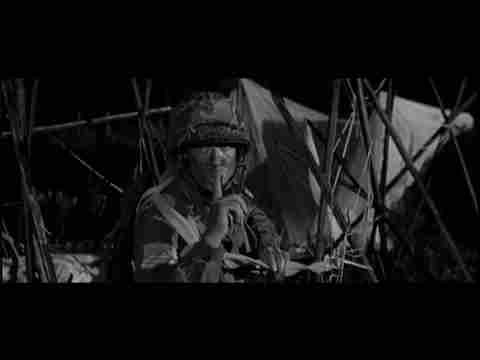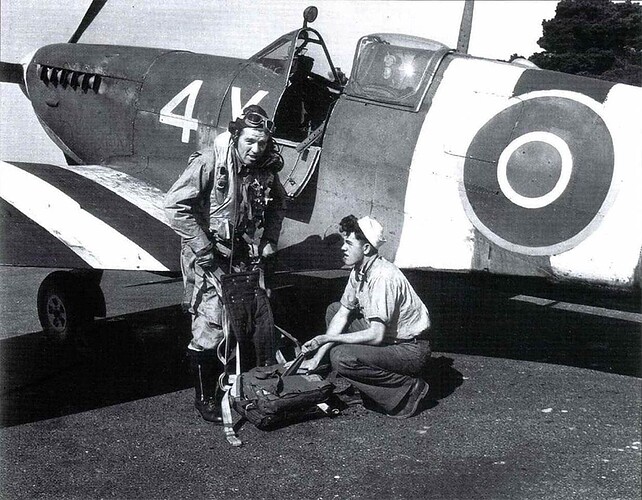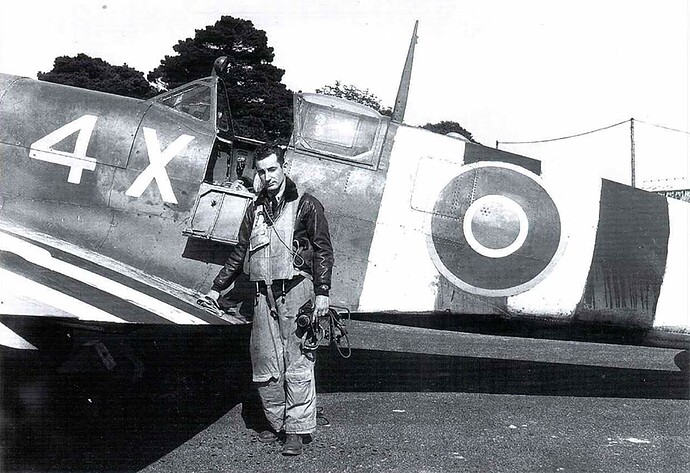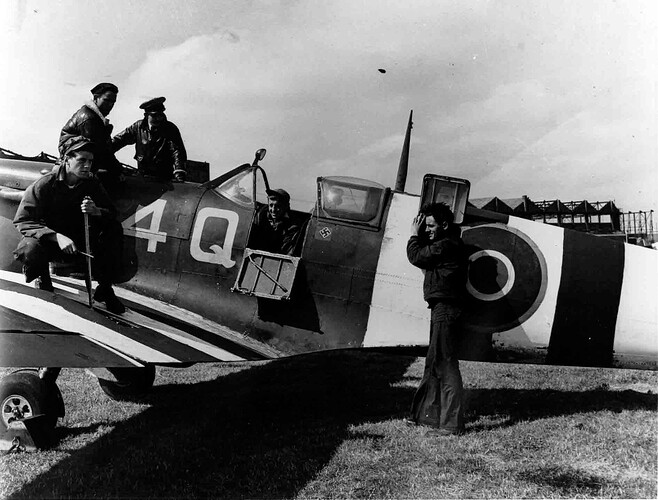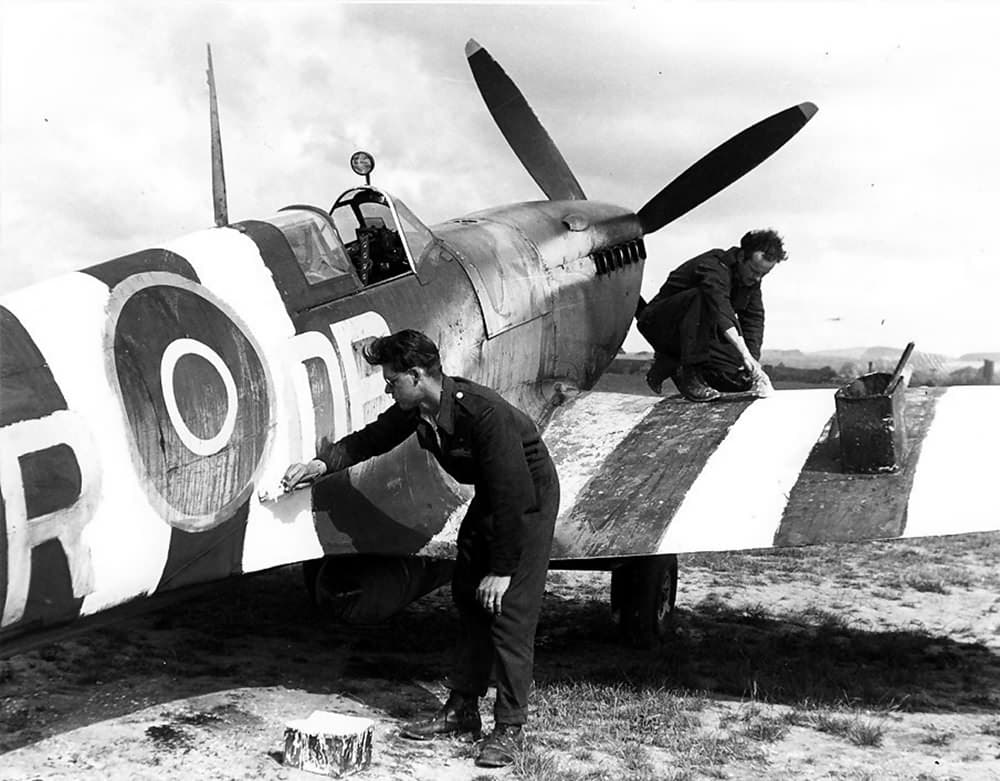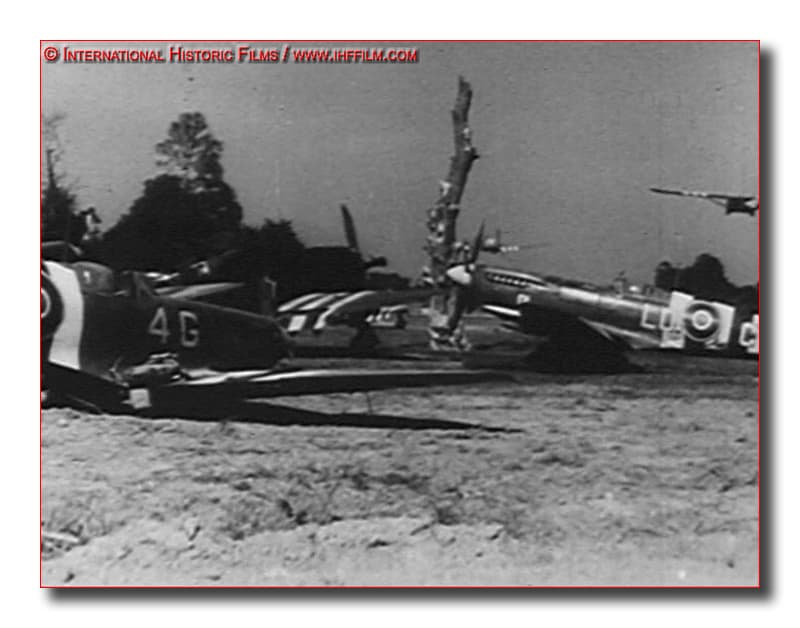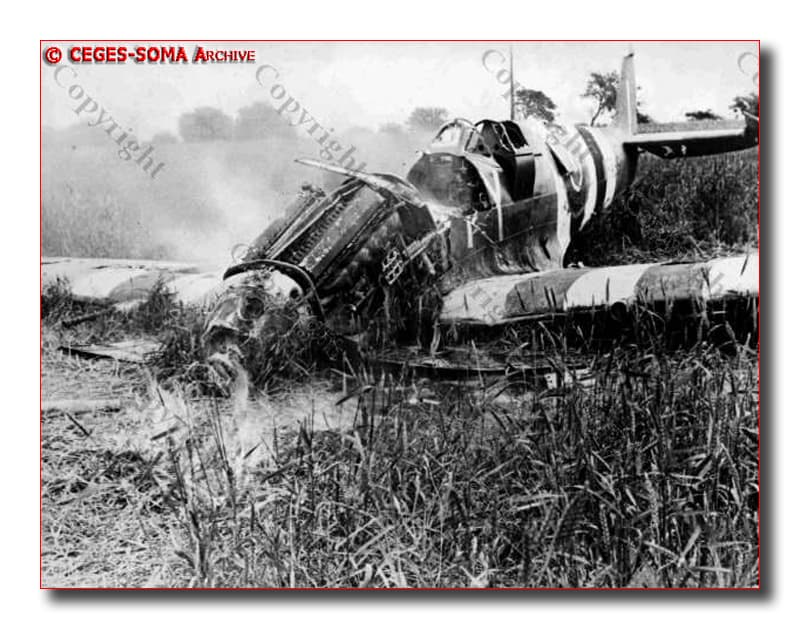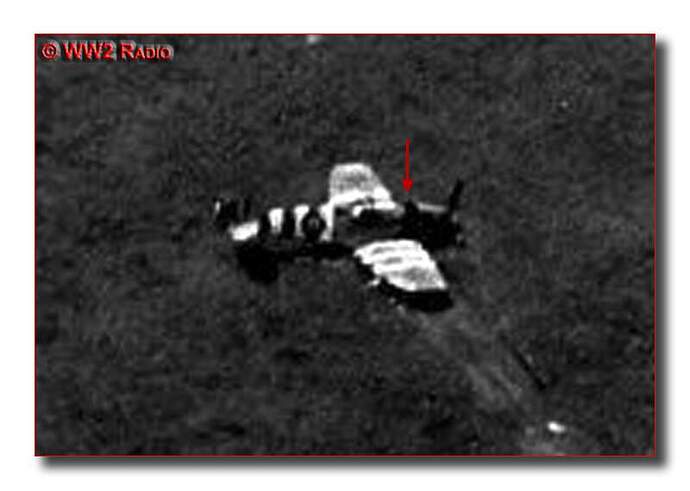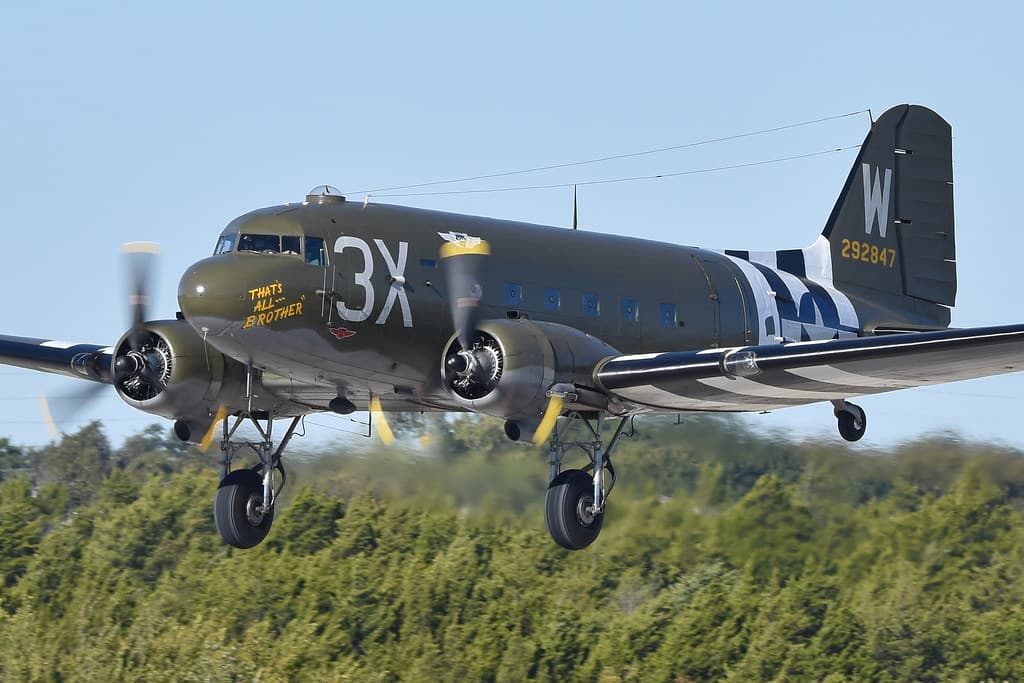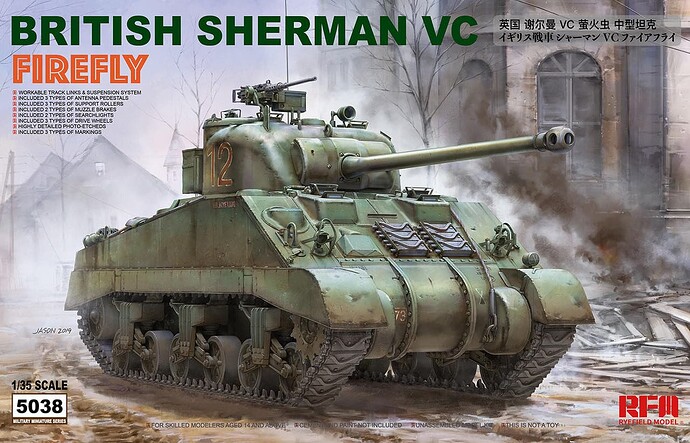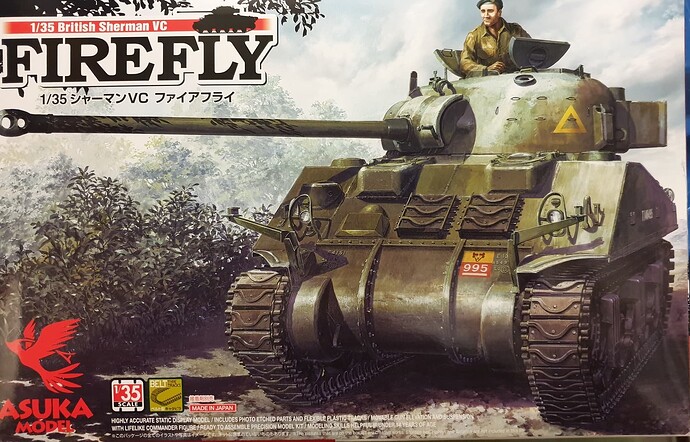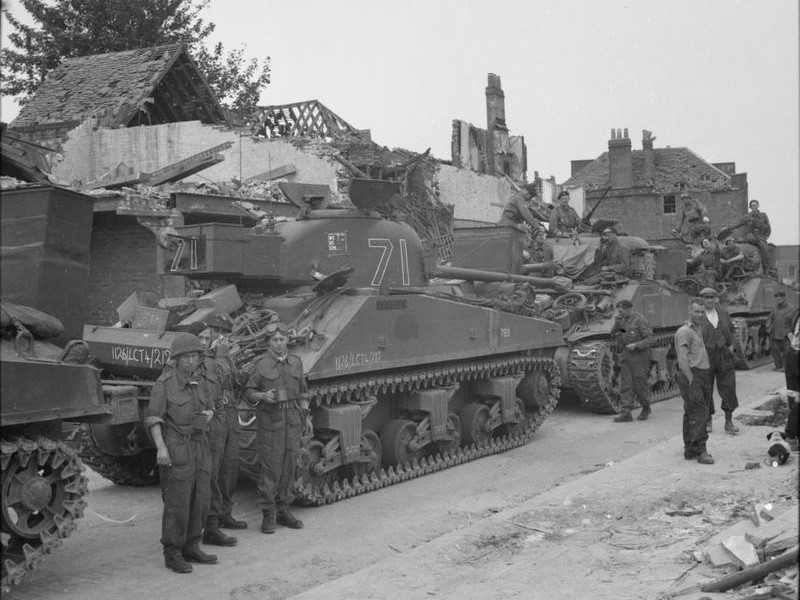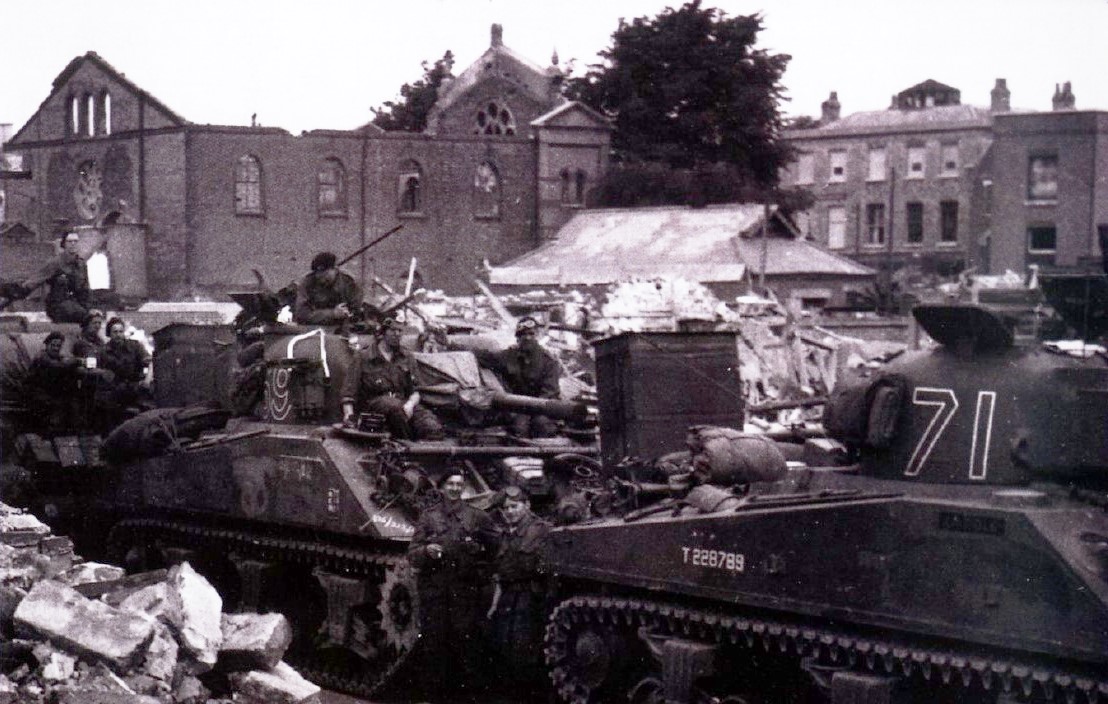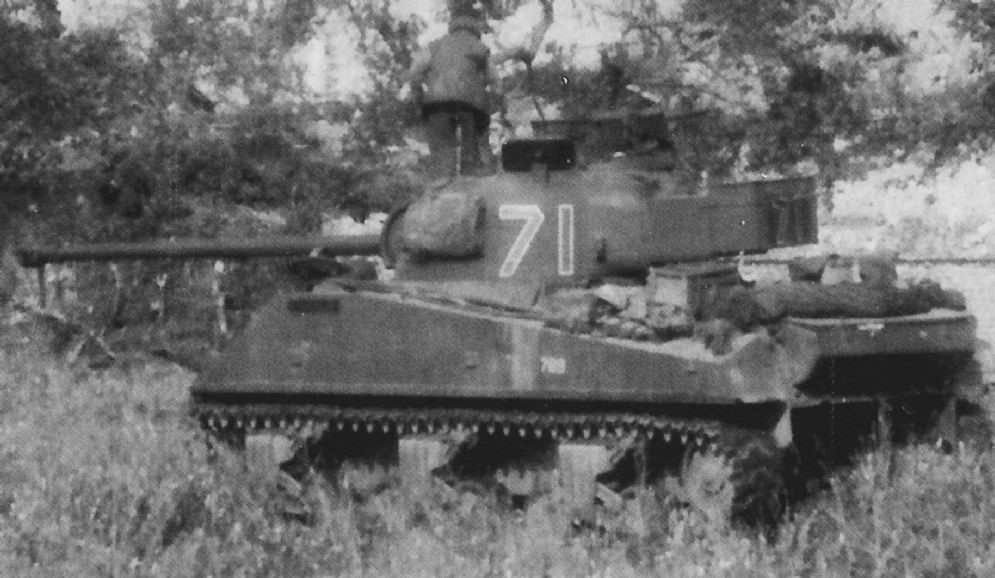Found a few more images. All have a two digit number starting with 4 followed by a letter just forward of the canopy. Haven’t found any serials on the rear fuselage, but they might be partly over painted by the stripes? So far haven’t found any photos showing the whole tail to confirm or deny that.

Nice see the invasion stripes on those and how rough some were painted
No masking tape used there!
One thing I haven’t been able to gather so far is if they were clipped wing V’s?
I’m surprised they haven’t been covered on a decal sheet but I’m not finding anything.
Very likely the serials were over painted. I’m researching mosquitos I’ve noticed many of the invasion stripe ones have two of the three digits in the letter code and their serials over painted
Not an American one but interesting to see them slapping the paint on …
not sure if you have seen this yet ?
It shows one Vb Spit they trained on, but thats from the 67 TacRecon Gp in US markings …
not sure if you can fully make out the wing on 4G ?
Anyone know if aircraft attached to the Air Defence of Great Britain (ADGB) would have had invasion stripes? I am considering doing one of the Mosquito FB MK VI from 418 Squadron of the royal Canadian Air Force. These were attached to ADGB but hit the airfield at Orelans France on June 6th
I am unsure if aircraft typically assigned to V1 interception over England would have gotten invasion stripes
From a well known online source …
"Invasion stripes were alternating black and white bands painted on the fuselages and wings of Allied aircraft during World War II to reduce the chance that they would be attacked by friendly forces during and after the Normandy Landings. Three white and two black bands were wrapped around the rear of a fuselage just in front of the tail and from front to back around the upper and lower wing surfaces.
After a study concluded that the thousands of aircraft involved in the invasion would saturate and break down the IFF system, the marking scheme was approved on May 17, 1944, by Air Chief Marshal Sir Trafford Leigh-Mallory, commanding the Allied Expeditionary Air Force. A small-scale test exercise was flown over the OVERLORD invasion fleet on June 1, to familiarise the ships’ crews with the markings, but for security reasons, orders to paint the stripes were not issued to the troop carrier units until June 3 and to the fighter and bomber units until June 4.
Stripes were applied to fighters, photo-reconnaissance aircraft, troop carriers, twin-engined medium and light bombers, and some special duty aircraft. They were not painted on four-engined heavy bombers of the U.S. Eighth Air Force or RAF Bomber Command, as there was little chance of mistaken identity, the Luftwaffe having few such bombers the [Heinkel He 177 and Focke-Wulf Fw 200 Condor being the exceptions. The order affected all aircraft of the Allied Expeditionary Air Force , the Air Defence of Great Britain, gliders, and support aircraft such as Coastal Command air-sea rescue aircraft whose duties might entail their overflying Allied anti-aircraft defenses.
One month after D-Day, the stripes were ordered removed from planes’ upper surfaces to make them more difficult to spot on the ground at forward bases in France. They were completely removed by the end of 1944 after the Allies achieved total air supremacy over France.
Looks like they would have Mead @Mead93
Thanks! Found this (seemingly well researched) decal sheet that suggest 418 squadron did receive the invasion stripes. But only on the lower rear fuselage
You can actually see that on this one, hairless joe from 418
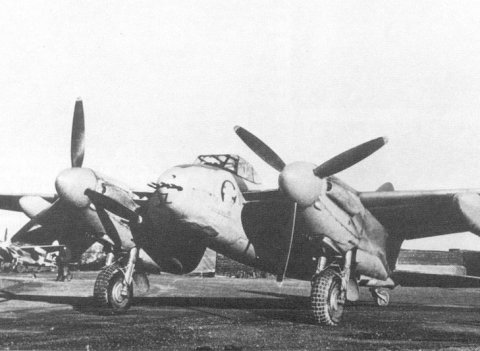
Those Spitfires were used by USN pilots who were normally flying OS2U Kingfishers to spot for naval gunfire. It was decided that the Kingfisher float planes would be too vulnerable to potential fighters and flak, so Spitfire Mk.Vs it was. The two digit alpha numeric codes were their identifiers. The unit was VOS-7.
[VOS-7]
(VOS-7 - Wikipedia
Adding a bit of a factoid about the invasion stripes painted on aircraft involved in the invasion; the Paratroopers of the 506th PIR that did the Mohawk haircut, painted their faces using the still wet paint being used to paint the invasion stripes on the C-47 Dakota planes they were about to jump off.
Planes like “That’s All , Brother”…
“Tico Belle”
“Drag-Em-Oot”
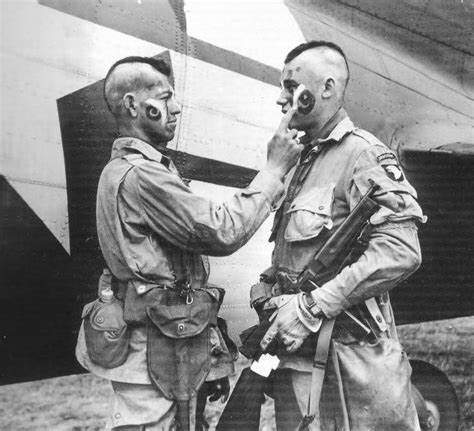
Paratroopers painting their faces in War Paint prior to jump-off; the paratrooper on the right is Jake McNiece himself.
Having done more research, I am now gravitating towards building a Sherman VC Firefly named “Carole” or “Spitfire”.
“Carole” was photographed on a street in England a few days before the invasion. A second photograph exists, taken on June 6, but I have yet to find it.
“Spitfire” was photographed boarding a Landing Ship Tank a few days before the invasion so I cannot prove it crossed the beach on June 6.
I have decals for both vehicles above but need to purchase a model to undertake the project. Rye Field’s VC Firefly looks like the best option.
I have that kit, good choice. You can also go Asuka for their VC Firefly as well.
Either choice is solid IMO.
They both look like excellent kits. I favor the Rye Field model because it has individual link tracks, more optional parts, and more skirt options. Come to think of it, I better make sure the kit tracks match the photos. Rye Field’s M4A3E8 “A Paper Doll” is also on my very short want list.
The tracks should be the same; if you need extras for adding the ad-hoc armor, go here.
I also thought about doing RFM firefly VC. I know the 1st hussars landed some on Juno on June 6th. I decided against in the end as I couldn’t find decals or photos to make one of the 1st hussars tanks
I’ve built the tasca VC. It is excellent. The rfm one looks great in the box
Thanks for all the help and links guys. It’s been a big help.
I’m going to assume that they were flying unclipped V’s for the moment. Corgi did 4Q in diecast and I would hope that they did their homework.
I’m going to use the Revell VB. Not the best, but I have a couple in the stash and it’s a good excuse to build one. I’ve also got all the markings I’d need in my decal spares.
Thanks for that. I can’t say I blame them. Hanging around a warzone in '44 in a Kingfisher or Curtis Seagull wouldn’t be my idea of a good time! While the V wasn’t exactly cutting edge by then, it can at least fight back if an Fw190 gets too close.
